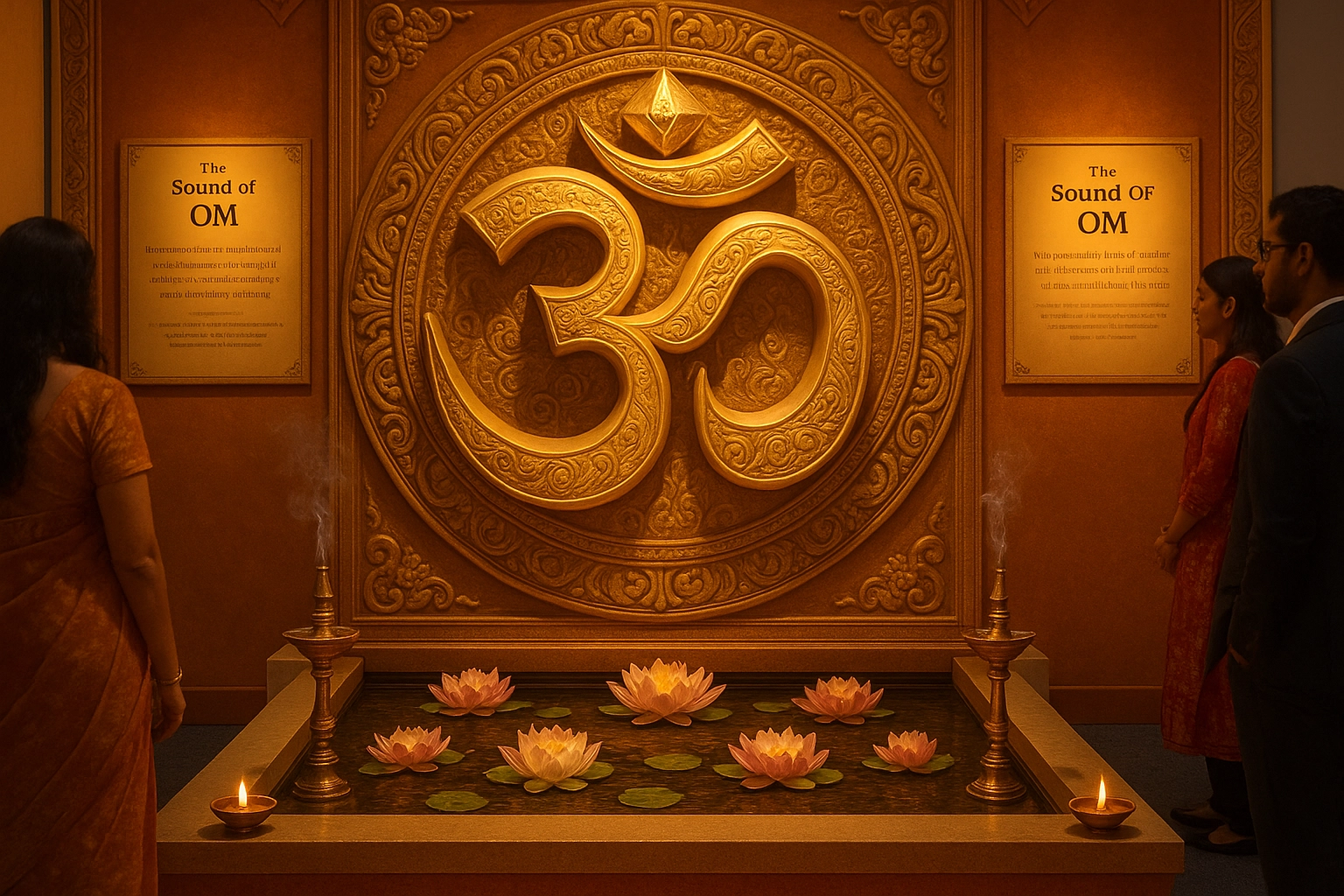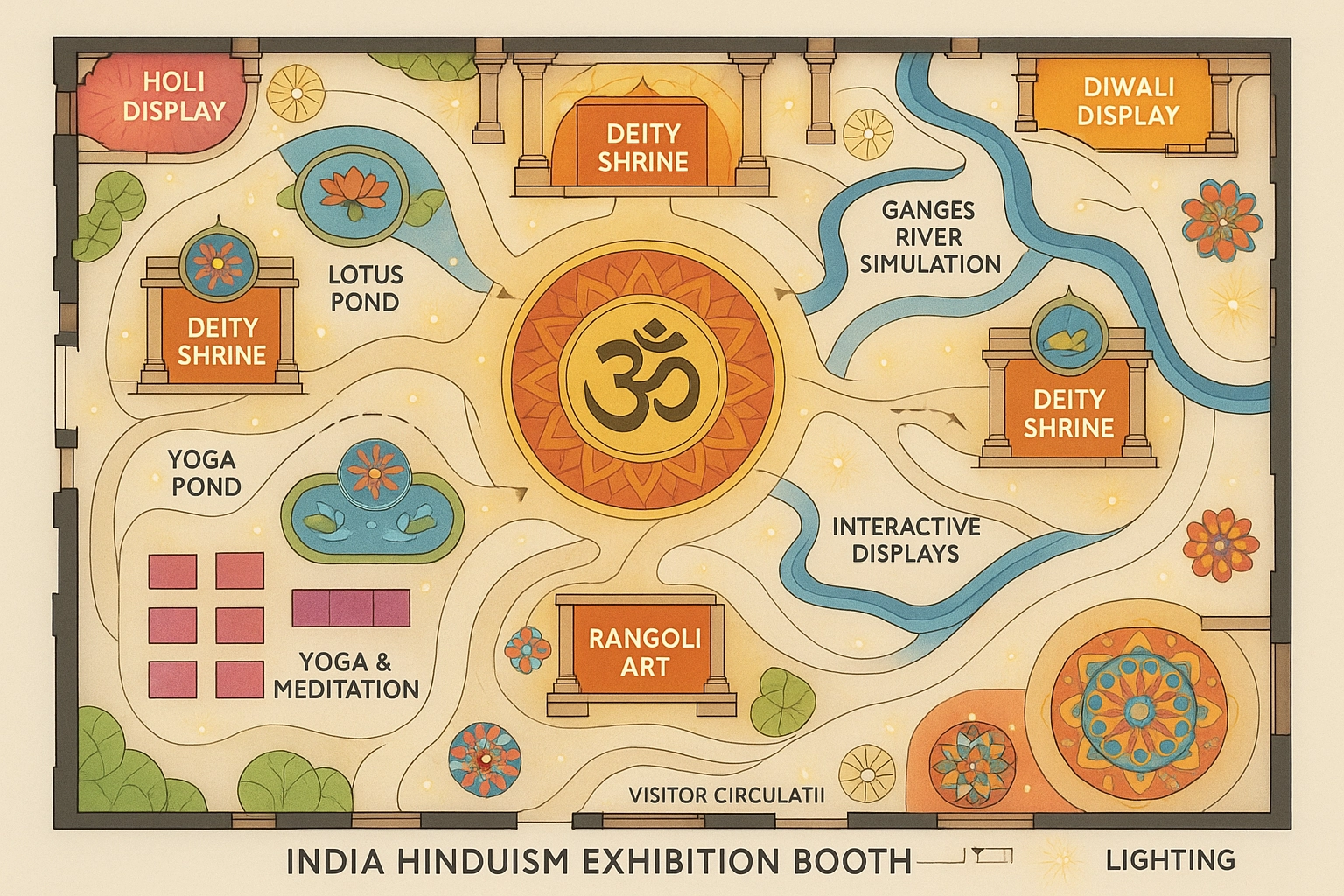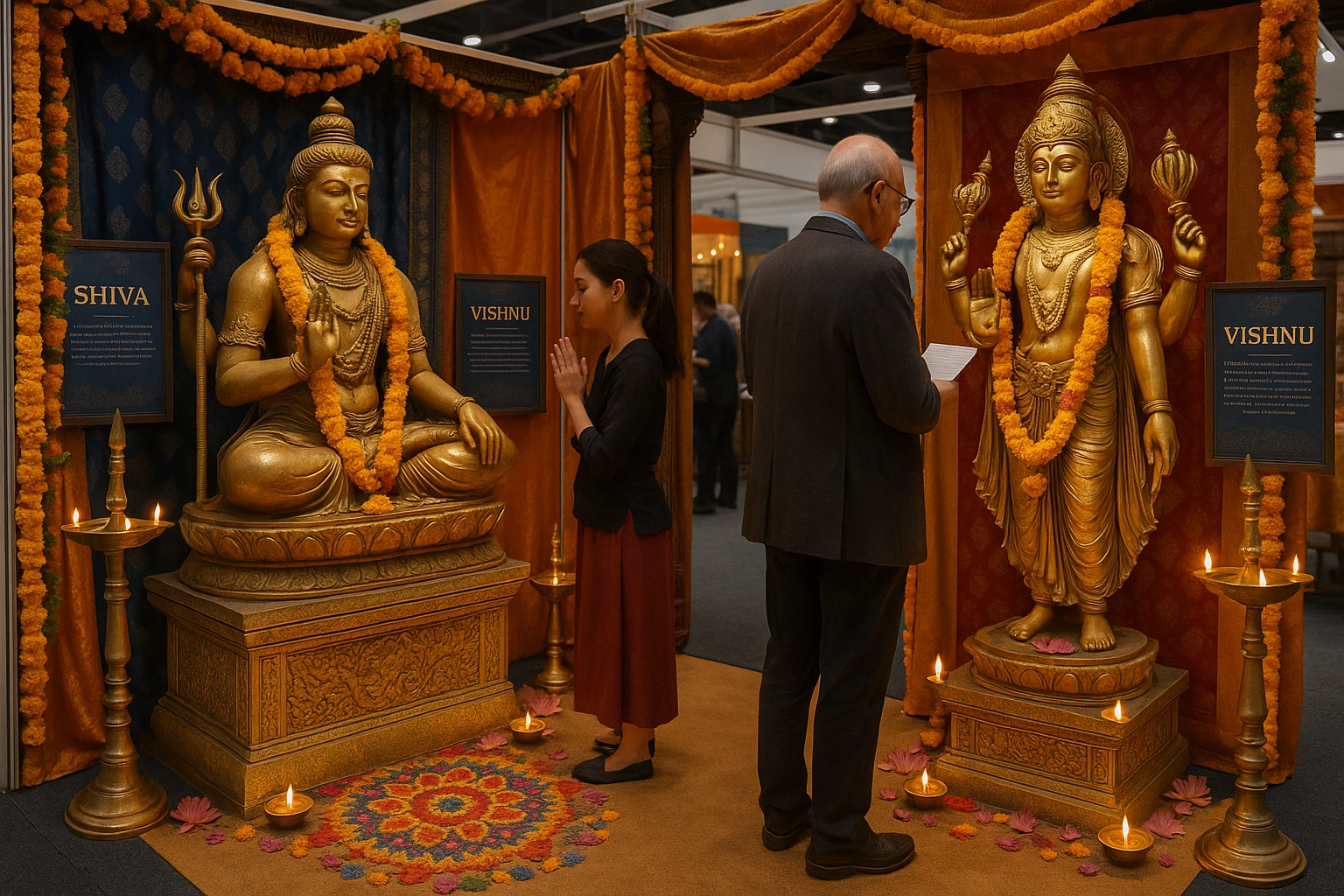Indian Hinduism Exhibition
Explore the profound wisdom and ancient traditions of Indian Hinduism through our immersive exhibition experience
Exhibition Layout & Experience

Exhibition Floor Plan
Interactive layout showing temple areas, meditation spaces, and sacred artifact displays

Main Exhibition Hall
Featuring sacred symbols, deity sculptures, and informational displays

Sacred Symbol Gallery
Traditional Om symbols, lotus patterns, and spiritual mandalas representing divine consciousness
Historical Origin
Hinduism is recognized as the world's oldest major religion, with origins tracing back over 5,000 years to the Indus Valley Civilization (circa 2500 BCE). Its earliest forms evolved from indigenous spiritual traditions and the Vedic culture that developed along the Sarasvati and Indus rivers.
Emergence & Development
Hinduism gradually formed through the synthesis of Vedic religion, local deities, and philosophical traditions. The Vedas (ancient Sanskrit scriptures) shaped early beliefs, while later texts such as the Upanishads, Puranas, and epic poems (Ramayana, Mahabharata) expanded Hindu philosophy and mythology.
Key Figures & Leaders
Sages (Rishis)
Ancient seers who composed the Vedas and Upanishads.
Adi Shankaracharya (8th c. CE)
Philosopher who consolidated the doctrine of Advaita Vedanta.
Swami Vivekananda
Modern saint who introduced Hindu philosophy to the West.
Core Concepts & Beliefs
Dharma
Righteous duty and moral order.
Karma
Universal law of cause and effect.
Samsara
Cycle of birth, death, and rebirth.
Moksha
Liberation from samsara and union with the divine.
Yoga
Spiritual disciplines for self-realization.
Brahman
Ultimate reality manifested through many deities.
Fundamental Principles
Ahimsa
Non-violence and compassion toward all beings.
Tolerance & Diversity
Acceptance of multiple paths and practices.
Satya
Seeking spiritual and moral truth.
Reverence
Respect for knowledge, ancestors, and nature.
Sacred Symbols
Om (Aum)
Primal sound representing ultimate reality and the universe.
Lotus Flower
Symbol of purity and spiritual awakening.
Swastika
Ancient symbol of auspiciousness and good fortune.
Trident & Conch
Sacred instruments and divine symbols.
Major Rituals & Ceremonies
Puja
Daily worship rituals in homes and temples.
Aarti
Devotional lamp ceremony.
Festivals
Diwali, Holi, Navaratri, Janmashtami, and many more.
Pilgrimage (Yatra)
Journeys to sacred rivers, mountains, and temples.
Global Influence & Cultural Impact
Global Influence
Hinduism has profoundly influenced the development of Indian civilization, shaping its art, music, literature, law, and social structure. Globally, its teachings on yoga, meditation, and non-violence have inspired millions.
Cultural Impact
Hinduism's pluralistic philosophy fostered a culture of tolerance, artistic innovation, and spiritual inquiry. It gave rise to architectural marvels, dance forms, philosophical schools, and vast traditions of storytelling.
Geographical Spread
Hinduism is predominantly practiced in India and Nepal, with significant communities in Sri Lanka, Bangladesh, Bali, Mauritius, Fiji, Trinidad & Tobago, South Africa, the UK, the US, and Canada.
Heritage & Legacy
The legacy of Hinduism endures in its sacred texts, philosophical schools, temple architecture, classical arts, and its emphasis on ethical living. Its influence persists through yoga, Ayurveda, vegetarianism, and a worldview that values harmony between humanity and nature.
Important Spiritual Books & Texts
Vedas
Rig, Sama, Yajur, Atharva
Upanishads
Philosophical treatises
Bhagavad Gita
Sacred dialogue on dharma
Ramayana
Epic of Lord Rama
Mahabharata
Great epic and philosophical text
Associated Holy Places & Structures
Varanasi (Kashi)
The holiest city on the Ganges River.
Kedarnath & Char Dham
Major Himalayan pilgrimage temples.
Meenakshi Temple
Renowned for its architecture and spiritual significance.
River Ganges
Considered the most sacred river.
Kumbh Mela Sites
Hosts the largest spiritual gatherings in the world.
Memorable Quote
"Truth is one; sages call it by various names."— Rig Veda